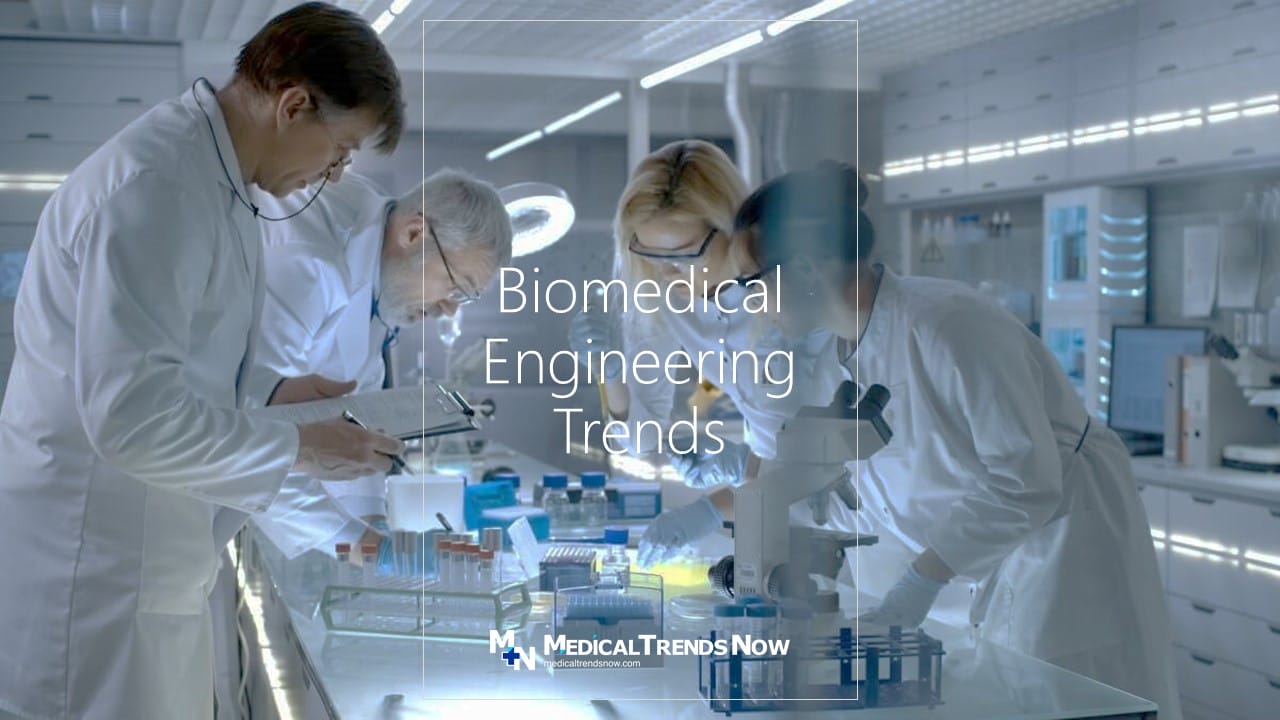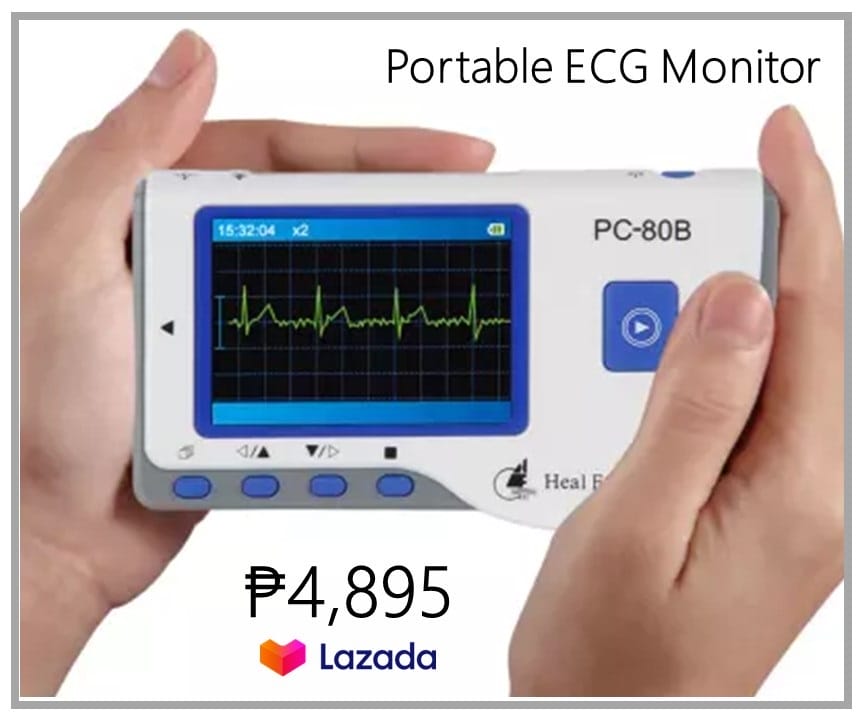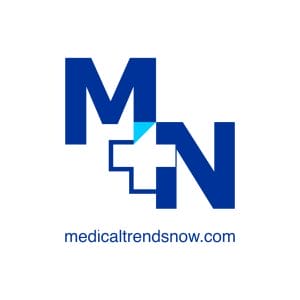Table of Contents
In 2022, biomedical engineering will continue to develop new techniques to diagnose and treat diseases.
The biomedical engineering field is constantly evolving and changing, which is why it’s crucial to stay up-to-date on the latest trends and innovations. This Ultimate Guide to Biomedical Engineering Trends will provide you with a comprehensive overview of some of the most critical developments in the field. This guide has everything you need to stay ahead of the curve, from new technologies to groundbreaking research findings.
This field of study focuses on the health and well-being improvement of people through the use of technology. Many new developments in this field are underway every year, which is why it’s crucial to stay up-to-date on what’s happening and how it can impact the healthcare industry.
In collaboration with our sister publishing company GineersNow, our medical writers have teamed up with GineersNow’s engineering writers for this ultimate guide.
So whether you’re a biomedical engineer looking to learn about new advances or just curious about what’s going on in the biomedical engineering industry, this ultimate guide is for you.
What is Biomedical Engineering?
Biomedical engineering is a field of engineering that deals with the design, development, and application of technologies that improve the health and well-being of people. Biomedical engineers use their knowledge of biomedical sciences to create products and devices that can help people heal injuries, treat diseases, and improve their quality of life. They also work to prevent injuries from happening in the first place by creating safer medical devices and treatments.
Biomedical Engineering Contributions: Healthcare Industry
Biomedical engineering is an essential contributor to the advancement of the healthcare industry. Biomedical engineering helps create devices and treatments that can help patients with their medical needs. Devices that are currently developing through biomedical engineering can help improve the quality of life for patients and can also help to reduce the amount of time that patients need to spend in hospitals. Additionally, biomedical engineering can help create new treatments and medications, improving the quality of life for patients suffering from certain medical conditions.
Biomedical engineering has played a significant role in the healthcare industry, as it has helped improve the quality of life for patients by developing new and innovative technologies. Some of the most notable biomedical engineering advances include prosthetic limbs, cardiac surgery, and cancer treatments.
Biomedical Engineering Trends in 2022
This year, biomedical engineering will continue to be a hot topic for patients, medical professionals, healthcare stakeholders, and business leaders.
Here are some of the most popular biomedical engineering trends that you should be aware of:
Medical Wearable Technologies
One of the biomedical engineering trends on the rise is wearable technologies and devices. These smart wearable devices have various medical purposes, such as monitoring heart health or tracking physical activity.
Biomedical engineering trends include developing new ways to use wearable devices to improve patient care. Medical wearable devices are becoming more popular each year because medical wearable devices are convenient and help people stay organized. There are many different types of wearable devices, including fitness trackers, smartwatches, and medical monitors.
Medical wearable technologies are devices worn on the body to collect medical data. With the use of artificial intelligence and 5G, the data collected from patients and consumers can then help diagnose, prevent illnesses, and treat medical conditions.
Implantable Technologies
Several implantable technologies, such as cardiac pacemakers and spinal cord stimulators, are becoming more common. These devices help control heart rate and blood pressure, respectively, and can be life-saving. Other implantable technologies include prosthetic limbs and hearing aids. These devices can provide improved mobility and hearing, respectively, for those who need them.
Implantable technologies have revolutionized the field of biomedical engineering by offering new ways to treat patients. These technologies include cardiac pacemakers, defibrillators, cochlear implants, and more. In some cases, implantable technologies will replace traditional medical procedures. Other times, implantable technologies are used in conjunction with conventional medical procedures to provide enhanced care for patients.
Implantable technologies are devices doctors can insert into the patient’s body, often through surgery. One of the biomedical engineering trends in implantable technologies includes devices that doctors can insert inside the body to monitor, detect symptoms, and aid patients’ conditions. These biomedical engineering devices help maintain or improve health and even save lives.
Here are some of the implantable innovations:
Cardiac Pacemakers
Cardiac pacemakers are devices that help control the heart rhythm. They work by sending electrical impulses to the heart to cause it to beat in a regular pattern. There are many different cardiac pacemakers, each with specific benefits and drawbacks. Some of the most recent technologies and innovations in cardiac pacemakers include:
- Advanced sensing and monitoring devices that can detect changes in heart function even when patients are not actively using their device;
- Newer, more sophisticated algorithms that help pacemakers more accurately predict when interventions such as shocks or pacing will be needed;
- More durable batteries that can last for years without needing to be replaced;
- More comfortable designs.
Arterial Stents
The latest technologies and innovations in arterial stents are changing how these devices can change patients’ lives in real medical settings. These advancements include new materials and designs that make the stents more effective and less prone to failure. Some of the most recent innovations in arterial stents include:
- The use of metal alloys that are stronger and more durable than traditional materials.
- The development of new delivery systems, such as self-expandable stents, allows for a more gradual release of the device into the artery, reducing potential side effects.
- The use of biodegradable materials that dissolve over time eliminates the need for replacement or removal procedures.
Hip Replacement Implant
There are many hip replacement implantable technologies on the market today. Some of the more common ones include:
- -Metal-on-metal implants: These are the most common type of hip replacement and consist of two metal pieces that are screwed together. They have a longer lifespan than other implants, but they can be more challenging to remove. Polyethylene terephthalate (PET) implants are made from plastic and typically have a shorter lifespan than metal-on-metal implants, but they’re often less expensive.
- -Alloy steel hip replacements: These are made from two pieces of metal that are welded together. They tend to be more durable than other types of implants, but they may not last as long as metal-on-metal implants.
Spinal Cord Stimulators Implant
There are several new technologies and innovations in spinal cord stimulator implants that are changing the lives of patients and the methodology of treatment. Some of the newer technologies include wireless technology, miniaturization, and improvements in battery life. Wireless technology allows for more flexible implant designs placed further away from the spinal cord for better coverage. Miniaturization has made these devices smaller and more accessible to the implant, making them more comfortable for patients. Improvements in battery life mean that patients can use these devices longer without recharging them frequently.
Biodegradable Glaucoma Implant
Many technologies and innovations are being used in the biomedical engineering field to help treat glaucoma. One of the latest technologies is a biodegradable implant. This implant is from a material that can break down over time, not posing a risk to the patient’s health.
A recently developed biodegradable glaucoma implant uses a polymerase chain reaction (PCR) to break down the device over time. The implant is a biodegradable material and can dissolve in the body over time. This technology could help reduce the environmental impact of glaucoma treatments.
Fighting Diabetes Using Implantable Programmable Insulin Pumps
A recent study has shown that diabetes can be effectively managed with implantable insulin pumps (IPPs). The study, which researchers at the University of Utah conducted, found that patients who used IPPs were more likely to achieve blood sugar control and fewer complications than those who did not use IPPs.
The study participants were all adults who had been diagnosed with type 2 diabetes. All of the participants used insulin injections for at least three years and had experienced at least one complication related to their diabetes. The participants were split into two groups: the first group received standard care, including lifestyle changes and medication therapy, the second group received IPP therapy.
The study results showed that implantable, programmable insulin pumps effectively manage diabetes.
Neuroprosthetics: Electrode array implants
Neuroprosthetics are devices that help people with neurological conditions, such as paralysis, regain some level of function. One common type of neuroprosthetic is an electrode array implant, which allows people with paralysis to control their prosthetic devices.
Cardioverter-defibrillators (ICDs)
There is no doubt that implantable cardioverter-defibrillators (ICDs) are among the most critical advances in cardiovascular care in recent years. These devices are used to treat heart arrhythmias and can prevent sudden cardiac death. ICDshave revolutionized how heart disease is treated and has saved thousands of lives.
Cochlear Implants
Cochlear Implants are medical devices that help people with hearing loss understand speech by sending electrical signals to the auditory nerve. There is an increasing demand for Cochlear Implants, as they can help people with hearing failure communicate more effectively. Recent innovations in Cochlear Implants include improved sound quality and reduced surgery time.
The Cochlear Osia 2 System is the world’s first active osseointegrated steady-state implant (OSI). The system can help people with hearing loss regain some level of hearing by directly stimulating the auditory nerve. Cochlear developed the device, a company based in San Diego, California.
Coolcore: Cooling Your Body with Bioengineered Clothing
Coolcore is a company that manufactures bioengineered clothing. The company was founded in 2009 by entrepreneurs Jason and Jenna Goldman. Coolcore’s goal is to make stylish and comfortable clothes while using technology to improve the environmental impact of clothing production.
As the world becomes increasingly warmer, scientists and engineers have been working hard to find ways to keep people calm. One of the most popular methods is to use bioengineered clothing. Bioengineered clothing can be made from cooler, more durable materials and resistant to stains.
Robotic Exoskeleton for Physical Rehabilitation
A robotic exoskeleton for physical rehabilitation is a viable option for those with mobility impairments. The robotic exoskeleton can improve mobility and function in both healthy and injured individuals. The patient wears the device and helps them walk, stand, and move around.
The robotic exoskeleton is an up-and-coming technology for physical medicine and rehabilitation. The robotic exoskeleton can support and assist people recovering from injuries, helping them regain mobility and strength.
Technology-Fueled Medicine and Smart Drugs: Smart Pills & Robotic Pills
As technology advances, the pharmaceutical industry is innovating as well. With ever-growing leaps and bounds in medical technology, it’s no wonder that there’s a growing trend of using technology-fueled treatments and smart drugs. What are smart pills? Smart pills are capsules or tablets that contain medication and sensors that track how well the body is absorbing the pill. This information can then be used to adjust the drug dosage as needed. What are biomedical engineering trends? Biomedical engineering trends encompass various topics, from advancing prosthetic technologies to creating artificial organs for transplant. By understanding these trends, healthcare professionals can stay ahead of the curve and help patients receive effective and safe treatments.
In recent years, there has been a lot of talk about the potential for technology-fueled medicine and smart drugs. What does this mean for patients? How will it change the way we treat disease? In this article, we will explore these questions and more.
Smart pills are small, handheld devices that can administer medication to patients without drinking or eating anything. They are often used to treat conditions like hypertension and diabetes, but they could also help with Alzheimer’s disease and dementia. Robotic pills are similar to smart pills, but they are larger and intended for use in hospitals or clinics.
Nanorobotics: Fighting Diseases Using Nanorobots
It sounded like a Hollywood movie, but this is real.
Nanorobots are tiny robots that can travel through the body and help fight disease. They can enter cells and destroy cancerous cells while leaving healthy cells unharmed. Nanorobots could deliver drugs directly to tumors or clean up debris inside the body.
Nanorobots are tiny robots that can be manipulated on a molecular level. They have the potential to fight disease by targeting and destroying cancer cells, viruses, and other harmful organisms. Nanorobots may diagnose and treat diseases.
Brain-computer interfaces (BCIs): Controlling prosthesis by just thinking
This really sounds like a Hollywood movie but BCI is gaining traction from Elon Musk and other technology entrepreneurs.
Brain-computer interfaces (BCIs) are devices that allow people with disabilities to control external devices, such as computers and prosthetic limbs, with their thoughts. BCIs have been used for many years to help people with disabilities interact with the world around them, but recent advances in technology have made BCIs more widely available.
One of the most common uses of BCIs is to control prosthetic limbs. People who have lost the use of their hands or arms can use BCIs to control a prosthetic limb using their brainwaves. This allows them to do things they could not do before, such as cooking or typing on a computer.
Another popular application of BCIs is in gaming. Many gamers use BCIs to control characters in video games using their thoughts. This allows them to perform complex tasks without using the hands or arms that they have lost. This can advance physical medicine and rehabilitation doctors for patients who cannot move their bodies.
3D Bioprinting: Tissue Engineering and Regenerative medicine
Tissue engineering and regenerative medicine are two rapidly growing fields of biomedical engineering. Tissue engineering is creating or repairing tissues and organs from a variety of sources, including cells, tissues from other animals, and even synthetic materials. Regenerative medicine uses therapies that can restore or improve the function of damaged or diseased tissues.
Many industries are using 3D printing technology, including biomedical engineering. It can create tissues and organs for transplantation and regenerative medicine. 3D printing can create scaffolds for tissue regeneration and individual cells or tissues. This technology can revolutionize the way we treat diseases and injuries.
Surgical Robotics: Telesurgery and Robot Assisted Surgery
The development of assisted robot surgery has been a rapidly growing field over the past few years. This technology can help surgeons perform complex surgeries with less risk and easier access to critical areas of the body. With the help of robots, surgeons can perform more complex surgeries with less fatigue and risk of injury.
Telesurgery is a surgical technique that uses a remote control to operate on patients. This technology was first developed in the 1960s and has since been used to perform a variety of surgeries, including brain surgery, heart surgery, and eye surgery.
Robotic surgery is a growing field that revolutionizes the way surgeries are performed. The technology has allowed surgeons to perform complex surgeries from a distance, using robotic arms and tools. This technology has also led to new surgery methods, such as telesurgery.
The Rise of Telemedicine During Pandemic
Telemedicine is a growing trend in the biomedical engineering field that has seen a surge in popularity during the Covid-19 pandemic. Telemedicine allows doctors to remotely diagnose and treat patients, often without visiting their patients in person. This technology has been incredibly beneficial for those who cannot travel or are too ill to travel.
Telemedicine has been around for a while, but it has recently increased in popularity during pandemics. This allows doctors to treat patients remotely, which can be more efficient and less stressful. Additionally, telemedicine can help reduce the spread of pandemics by enabling people to get treatment quickly.
Telemedicine is the use of telecommunications technologies to provide healthcare services. Telemedicine can provide remote patient care, including consultations with doctors, diagnostic testing, and treatment. It can improve the quality of care for patients who cannot travel to a doctor’s office or hospital.
Benefits of Using Artificial Intelligence in Medical Imaging
Doctors are using Artificial Intelligence (AI) in medical imaging for several reasons. First, AI can help identify abnormalities more quickly and accurately than human beings. Second, AI can help automate the process of image analysis and interpretation, reducing the time needed to make decisions about patient care. Finally, AI can help researchers develop new methods for analyzing medical images.
Artificial intelligence (AI) has been widely used in medical imaging, improving the accuracy and speed of image analysis. AI can identify abnormalities in images, help doctors make better diagnoses, and recommend treatments. Artificial intelligence is being used more and more in medical imaging. This technology can help doctors diagnose diseases and injuries more accurately. It can also help doctors plan surgeries more effectively.
Fighting Obesity Using Transdermal Drug Delivery’s Microneedle Arrays
Obesity is a growing problem in the United States, and it’s not just a problem for adults. According to the Centers for Disease Control and Prevention (CDC), obesity rates have doubled in children and adolescents since 1980. Obesity is also a significant health concern for adults, as obesity increases the risk of developing chronic diseases such as heart disease, stroke, type 2 diabetes, and some types of cancer.
One way to fight obesity is to use transdermal drug delivery systems (TDSs). TDSs are devices that deliver drugs through the skin. TDSs can treat a variety of conditions, including obesity. One type of TDS used to fight obesity is called a microneedle array. A microneedle ar array is a device that consists of a number of tiny, thin needles. The needles penetrate the skin, and then the device delivers drugs to the skin.
Virtual Reality, Augmented Reality & Mixed Reality Biomedical Engineering
Virtual Reality and Augmented Reality are technologies that allow users to experience a three-dimensional environment that is different from the real world. These technologies have a number of potential benefits for the medical field, including improving patient care, training doctors and nurses, and helping patients learn about their health.
Virtual Reality (VR) is a technology that immerses users in a computer-generated environment. Augmented Reality (AR) is a technology that superimposes digital information in the real world. Mix Reality (MR) is a technology that blends the real and virtual worlds. MR can create realistic simulations of patients’ environments, for example, to help doctors diagnose medical conditions.
VR, AR, and MR are all technologies used in healthcare. These technologies can change the way we treat patients and improve their quality of life. VR has been used to treat anxiety and PTSD, while AR has been used to help patients with conditions like stroke or Parkinson’s disease. MR is being used to study diseases like cancer and Alzheimer’s and create prosthetic limbs.
Virtual Reality, Augmented Reality, and Mix Reality are all types of digital technology that allow people to experience a simulated environment. Virtual Reality will enable people to enter a simulated world, while Augmented Reality adds information to the real world. Mix Reality takes the best of both worlds by blending virtual and augmented reality together.
VR in Medical Surgery
Virtual reality is an effective tool for training medical professionals in surgical procedures. It allows them to practice the system on a virtual patient, which can help them to improve their accuracy and speed. Additionally, virtual reality can provide patients with realistic images of their surgery, which can help them feel more comfortable and reduce anxiety.
VR in Medical Training
Virtual reality (VR) technology has been increasingly used in medical training, as it can help students learn about various medical procedures and treatments firsthand. VR has also been effective in training nurses and other healthcare professionals.
Internet of Medical Things
The Internet of Medical Things (IoMT) is a term that refers to the growing trend of interconnected devices and systems that can communicate with each other to monitor, diagnose, and treat health conditions. The IoMT will revolutionize how healthcare providers interact with patients and improve patient outcomes.
Using Robotics and Automation In Pharmaceutical Manufacturing
Robotics and automation have become integral tools in the pharmaceutical manufacturing process. They help to improve efficiency and accuracy while also reducing environmental impact. In particular, robotics can fill and pack pills and monitor production processes. Automation can help to optimize operations and improve safety.
Robotics has been used in pharmaceutical manufacturing for many years now. The automation of specific tasks, such as filling and labeling bottles, has made the process faster and more efficient. Robotics also helps in the inspection of products, which can help to ensure they are safe for human use.
Robotics and Automation are becoming increasingly common in pharmaceutical manufacturing, as they allow for faster and more accurate production. Robotics can help automate processes and improve accuracy, increasing efficiency, and quality.
Microbubbles Injectables Biomedical Engineering
Microbubbles loaded with drugs can be injected into the body, according to a study published in The Lancet. The study found that when microbubbles are infused with a prescription, they can reach specific tissues in the body. This could be a way to deliver drugs directly to where they are needed most.
Microbubbles are often injected into the body to deliver drugs or other treatments. The bubbles are present when a liquid is heated to a very high temperature and then forced into a small opening. This process creates tiny bubbles about 100 times smaller than the width of a human hair.
Human Organs-on-Chips: Microfluidic Devices Biomedical Engineering
As the world becomes ever-more technologically advanced, so too does the field of biomedical engineering. One such example is the development of human organs-on-chips for disease modeling and personalized medicine. These chips are essentially miniature replicas of human organs that can study how diseases interact with these organs in detail. This information can then develop better treatments for patients suffering from various diseases.
Microfluidic devices are becoming increasingly popular for research and drug development. They are often in line with living human cells, studying how drugs interact with human cells. This technology can improve our understanding of diseases and help us develop better treatments.
Mini Bioreactors (Not Iron Man) Biomedical Engineering
Mini bioreactors can be used in biomedical engineering to create small batches of cells or proteins. They can study the effects of different conditions on cells or produce small amounts of a particular protein or cell type. Mini bioreactors are also helpful for testing new medical treatments.
Mini bioreactors are systems that support biologically active organisms and their by-products. Medical professionals use it in various industries, including the pharmaceutical, food, environmental, and chemical industries. Mini bioreactors can produce small quantities of products quickly and efficiently.
Prime Editing: Gene-Editing Technique Biomedical Engineering
Gene editing is a technique used to modify an organism’s genetic code. It is a powerful tool that can cure diseases, improve crop yields, and create new species. However, gene editing is not without its risks. The prime editing technique uses enzymes called primers to cut the DNA at specific points. This method is more accurate than base editing, which uses a pair of scissors to cut the DNA strand. Crispr-Cas9 technology uses a gene-editing tool that allows scientists to make precise changes to the genome by breaking and repairing DNA strands.
Conclusion: Biomedical Engineering is continuously innovating and improving patients
Biomedical engineering is constantly innovating and improving the lives of those who use it. From diagnostics to treatments, biomedical engineering is continuously working to improve the quality of life for all. With so many advances being made, it’s no wonder that biomedical engineering is one of the most in-demand fields in the world.

Biomedical Engineering Sources:
- GineersNow
- Harvard University
- Massachusetts Institute of Technology (MIT)
- Imperial College London
- UCLA Bionics Lab
- Yale University, School of Engineering & Applied Science
- University of Cambridge, Department of Engineering
- The American Society of Mechanical Engineers ASME
- SRG
- Rehack
- School of Engineering, Case Western Reserve University
- Grand Canyon University
- Science Direct
- World Economic Forum













